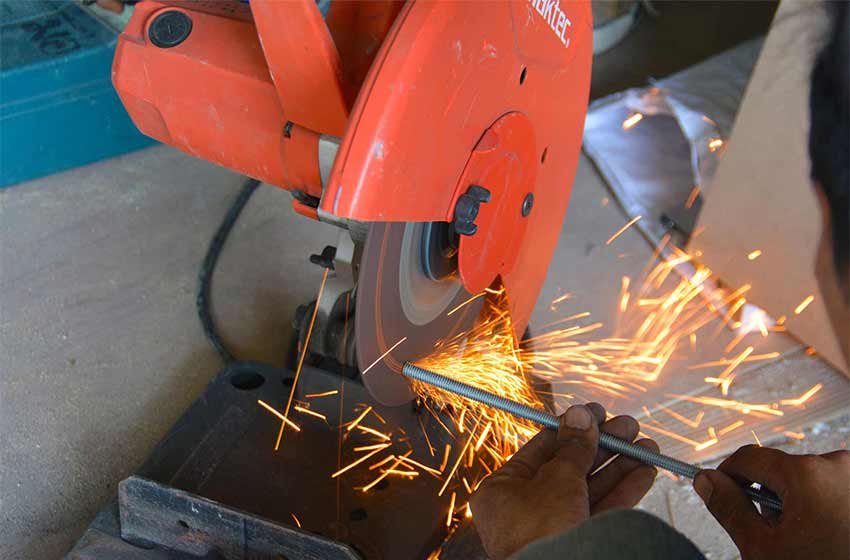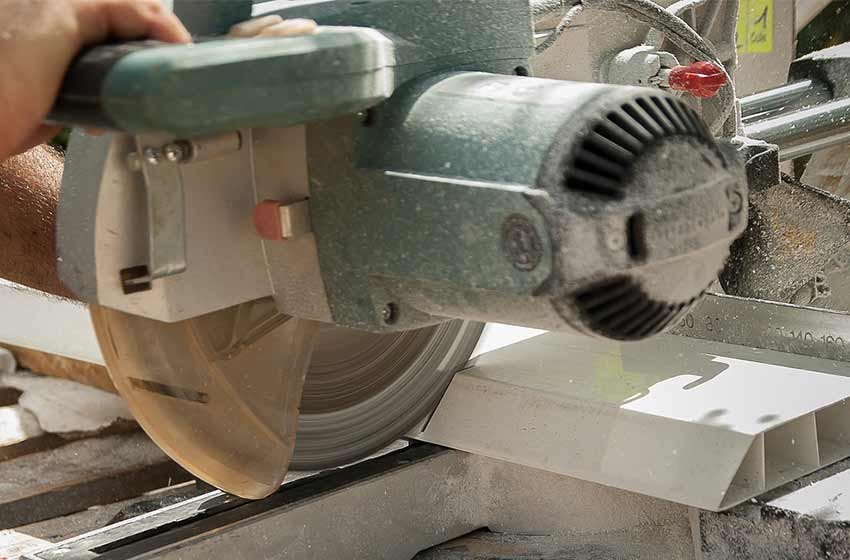What Is a Hammer Drill & How Are They Used?
Hammer drills are essential tools for DIY enthusiasts thanks to their high level of power which can help you drill through any heavy-duty material that a typical drill can't.

Although small, these powerful drills can be used for drilling through concrete, masonry and other kinds of brick or stone with ease. They do this by using their rotary motion which is combined with a hammering action.
To understand more about hammer drills, the pros and cons of them and how we can use them, we have listed out a special guide below that will give you everything you need to know about hammer drills so as you can see if you need one for your DIY.
Let's get into it!
What Are Hammer Drills?
Let's start our guide by understanding what a hammer drill is. Hammer drills, as we mentioned above are a power tool, and are one of the best DIY construction tools out there if you ever find yourself needing to drill through materials like concrete.

The way this hammer drill works is by using hammer pulses from the back end of the device to help the rotating head move forwards, their power is measured in joules, and you can find lightweight to heavyweight models on the market, with the latter coming in use for heavy-duty construction projects.
Hammer drills additionally come with two power options; percussion or pneumatic. Percussion power on a hammer drill works with gears and discs to make a hammering and rotating action, pneumatic power on the other hand use electricity and compressed air to make this movement.
Why Should I Buy a Hammer Drill?
You should only get a hammer drill if you need it, for example, if you are a serious DIY, professional or construction worker who is often faced with tasks that require you to drill into rock and concrete, a hammer drill will massively benefit you, as normal drills with a masonry bit will still struggle with this job.

They also help you make large holes quickly, speeding up your workflow and improving accuracy.
Main Uses For a Hammer Drill
We mentioned a few uses for hammer drills above, but hammer drills can also be beneficial in other situations which you might not have considered, we have listed out the best uses for a hammer drill below.

- Drilling in hard materials such as; masonry, concrete, stone or metal.
- Chiselling - When set on the hammer only mode, hammer drills can assist in chiselling, not only drilling due to them being able to handle hard materials.
- Demolition - Whether you are looking to tear down old structures or remove solid materials, a hammer drill can assist in demolition purposes.
- Removing mortar - Hammer drills can be used to take out the mortar in between bricks quickly.
- Useful for plumbing purposes when it comes to drilling pipes.
Types Of Hammer Drills On The Market
There is more than one type of hammer drill on the market to choose from, and depending on what power you need, you might prefer using one to the other for your work.
We have noted the different types of hammer drills below for you to look at.
Cordless Hammer Drills
These types of hammer drills have no power source needed as they get their drilling power from their batteries, they are best suited to people who are doing home DIY, don't need too much power and want to be able to move around with their drill. We would say cordless hammer drills are great for making a hole or two, but not for doing heavy-duty multiple hole drilling.

Corded Hammer Drills
Corded models are best for professional use as they have a more consistent speed of power and get the job done fast. These hammer drills will hold up to drilling multiple holes, you just need to ensure you are by a power source.

Dedicated Hammer Drills
This type of hammer drill is also called a rotary hammer and is the best one of all for drilling through hard materials such as stone, it has a handle on the side too and is often used by contractors for construction work.

What Is an SDS Rotary Hammer?
SDS rotary hammer drills are the more powerful version of the average hammer drill and come with a specialised drive system that makes the chuck of the drill hold on to the drill bits without losing in it in boreholes.

Choosing which features you need in a hammer drill can be a little overwhelming if it's your first time buying one, from different RPMs to drill bits, it's important to ensure that you get everything you need in your drill so as it can be of the best use to you and your work.
This SDS feature will also allow you to attach specialised bits for better hammering and drilling.
What To Look For In The Best Hammer Drill
We have put together some of the essential features to consider in your hammer drill below.
- Drilling speed - One of the most important specs to consider in your hammer drill is speed, if you are after a heavy-duty hammer drill, make sure it has over 2000 RPM, for an average hammer drill you can look for 1200-1500 RPM. This speed should also be variable so as you can pick and choose when you want more or less power during drilling.
- Modes - You should always check what operating modes come with your hammer drill, most have; chisel, drilling, hammer drilling, demolition and screw driving.
- Type - Whether you choose a rotary hammer for extra power or a cordless hammer drill, ensure you go for the type that suits your work best.
- Motor - The motor of your hammer drill will determine how well it can drill, this will be displayed in amps, so the higher the amps/torque the better the action.
- SDS chuck - If you choose a rotary hammer, you need to ensure it comes with the right shank bits; SDS max, spline shank and SDS+.
- Design - From side handles to large triggers, make sure your hammer is ergonomic and consider its weight if you will be using it for long periods with multiple drilling.
- Self-tightening - Some of the best hammer drills have a self-tightening system that will make sure the drill bit of your hammer drill stays secure and tight despite any impact, saving you from having to re-tighten the bit constantly.
- Drill bits - You should ensure you have the right drill bits for your hammer drill depending on what you are going to use it for, in terms of a rotary hammer drill you will have a choice between; core bits, chisel bits and twisted bits.
- LED light - LED lighting on your hammer drill is a very important feature that can help you drill holes more accurately in low-light situations.
- Impact - The impact of your drill will be measured in joules, you can also look at the BPM rating to see how powerful your drill is.

Frequently Asked Questions About Hammer Drill Uses
How does a hammer drill differ from a regular drill?
Hammer drills allow you to deliver blows and drill simultaneously, regular drills only have a standard rotatory motion without a hammer function included.
What are some safety tips for using a hammer drill?
Add lubrication to your drill to stop it from overheating, wear safety equipment such as goggles and hold on to the side handles for extra stability.
How much does a hammer drill cost?
This is variable to the model and brand that you buy but hammer drills will cost around £100-£300, the higher the motor, speed and impact, then the higher the price too!
Last Words
Overall, hammer drills are a must-have for any serious DIY user or contractor who is faced with drilling through hard materials often and wants a heavy-duty tool that can speed up their work, have good accuracy and get the job done. Always ensure you get a hammer drill with enough RPM and BPM for your work, for more professional uses, consider getting a rotary hammer due to its added power, ensure you wear safety equipment when using this power tool too.
















Great article! I’m reading up on hammer drill and their used and this is the easiest and most informative I've come across so far.
Keep up the good posting.. Elliot
Thanks